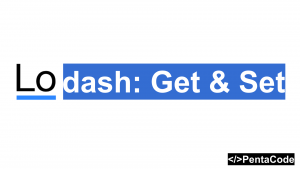This tutorial will show you how we can add Redux to the Create React App starter project. We’ll be using community best practices to structure our application while maintaining simplicity. In the end, the app will be a simple shopping cart that allows us to add items from the shelf.
Let’s get started.
Create a boilerplate project withe the create-react-app command
create-react-app CRARedux(If you need an intro or refresher on how Create React App works, then I suggest you check out this tutorial: Getting started with React with Create React App)
Install relevant redux modules:
npm i redux --save
npm i react-redux --savego inside the src folder and create a couple of directories and files:
cd src && mkdir actions components reducers && touch store.jsThe src/store.js file will be the following:
import { createStore } from 'redux';
import rootReducer from './reducers';
export default(initialState) => {
return createStore(rootReducer, initialState);
}Next we’ll need to create a cart reducer which will accept an add action and update our cart items accordingly, the index reducer will combine all reducers together:
// src/reducers/cart.js
export default(state = [], payload) => {
switch (payload.type) {
case 'add':
return [...state, payload.item];
default:
return state;
}
};// src/reducers/index.js
import cart from './cart';
import { combineReducers } from 'redux';
const rootReducer = combineReducers({
cart
});
export default rootReducer;Next we’ll create a simple add to cart action:
// src/actions/cart.js
export const addToCart = (item) => {
console.log('adding item:', item);
return {
type: add,
item
};
}Great, now we need to hook up our main application entry point, modify the root index.js like so:
import React from 'react';
import ReactDOM from 'react-dom';
import App from './App';
import './index.css';
import { Provider } from 'react-redux';
import Store from './store';
const StoreInstance = Store();
ReactDOM.render(
<Provider store={StoreInstance}>
<App />
</Provider>,
document.getElementById('root')
);Now we that have the basic redux data flow set up structurally, we are ready to create our components.
We are going to have two components: a shelf component that displays a list of items on the shelf and a cart component that displays items we currently have in our cart.
// src/components/shelf.js
import React, { Component } from 'react';
class Shelf extends Component {
constructor(props) {
super(props);
this.onAddItemToCart = this.onAddItemToCart.bind(this);
this.state = {
shelfItems: [
'shampoo',
'chocolate',
'yogurt'
]
}
}
onAddItemToCart(item) {
this.props.addItem(item);
}
render() {
const shelfItems = this.state.shelfItems.map((item, idx) => {
return <li key={idx}><button onClick={() => this.onAddItemToCart(item)}>[+]</button>{item}</li>
});
return (
<div>
<h2>Store Shelf:</h2>
<ul>
{shelfItems}
</ul>
</div>
);
}
}
export default Shelf;The Cart component will be our container component, it will perform the necessary data hookup logic with our store:
import React, { Component } from 'react';
import { bindActionCreators } from 'redux';
import { connect } from 'react-redux';
import * as cartActions from '../actions/cart';
import Shelf from './shelf';
class Cart extends Component {
constructor(props) {
super(props);
this.state = {
}
}
render() {
const cartList = this.props.cart.map((item, idx) => {
return <li key={idx}>{item}</li>;
});
return (
<div className="Cart">
<Shelf addItem={this.props.action.addToCart}/>
<h2>Shopping Bag</h2>
<ol>
{cartList}
</ol>
</div>
);
}
}
function mapStateToProps(state, props) {
return {
cart: state.cart
};
}
function mapDispatchToProps(dispatch) {
return {
actions: bindActionCreators(cartActions, dispatch)
}
}
export default connect(mapStateToProps, mapDispatchToProps)(Cart);and finally, we need to update App.js to include our cart container component:
import Cart from './components/cart';and modify the App-intro class to:
<div className="App-intro">
<Cart />
</div>And with that, you now have redux in your starter project, Congrats!
Resources:
- React Router: Official React bindings for Redux. Performant and flexible.
- Redux: Predictable state container for JavaScript apps
- Create React App: Create React apps with no build configuration.
If you enjoyed this tutorial, make sure to subscribe to our Youtube Channel and follow us on Twitter @pentacodevids for latest updates!





